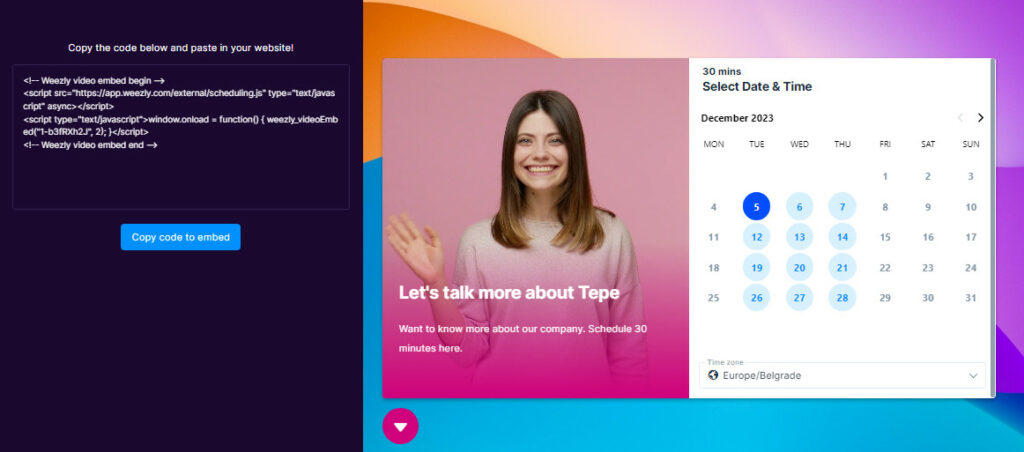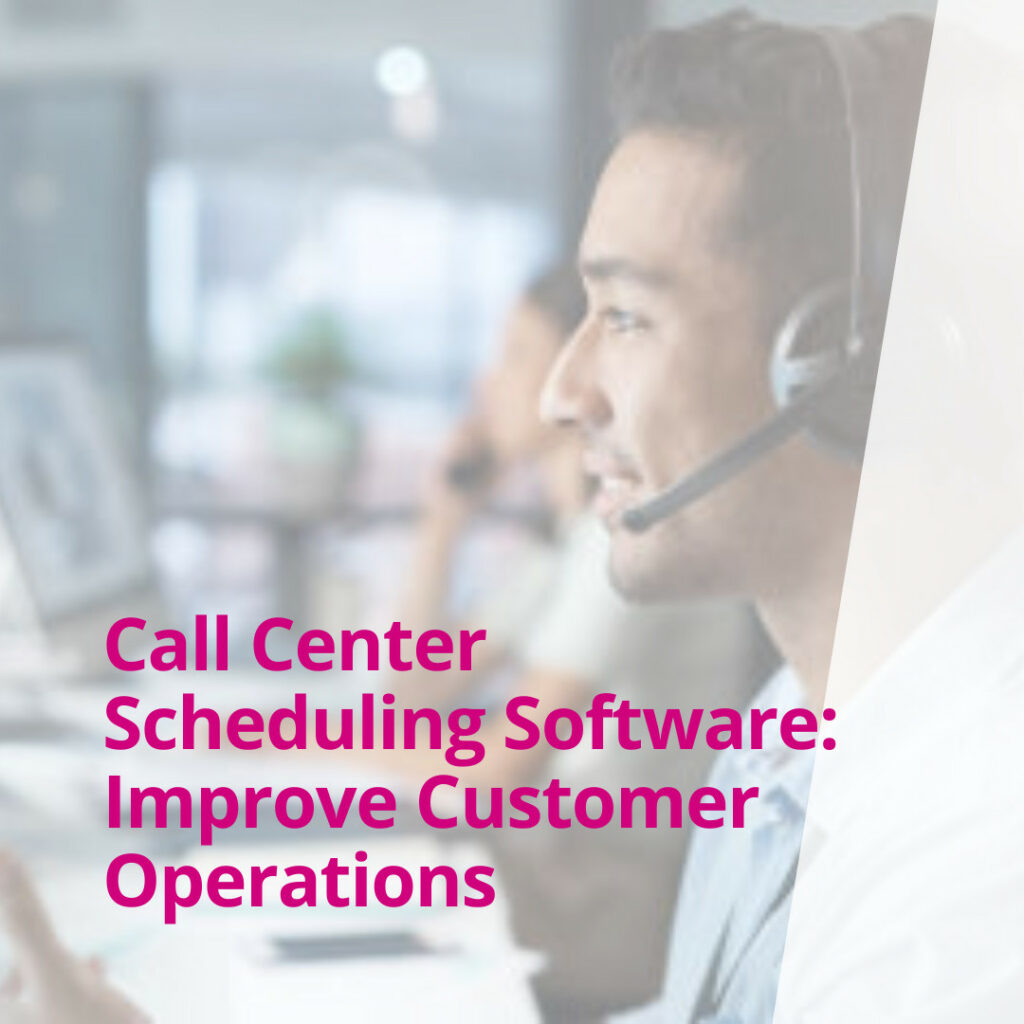The heartbeat of any call center lies in its scheduling. Effective management of resources, optimal scheduling of representatives, and ensuring smooth operations all come down to one critical tool: Call Center Scheduling Software. As the demand for impeccable customer service continues to rise, businesses can no longer rely on traditional methods for managing their call centers.
In today’s fast-paced world, where customer expectations are always evolving, adopting technology solutions like call center scheduling software has become a necessity. Let’s dive deep into understanding its significance, benefits, and how it can be a game-changer for businesses.

What is Call Center Scheduling Software?
At its core, call center scheduling software is designed to automate, optimize, and streamline the scheduling processes of call center agents. These solutions usually come equipped with features like shift management, time-off requests, and real-time monitoring, among others.
With customer service being a 24/7 job in many industries, ensuring that there are enough agents available during peak times while avoiding over-staffing during quieter periods can be a tricky balancing act. This is where the software comes into play.
Key Features of Call Center Scheduling Software
There are a plethora of features that make call center scheduling software a boon for businesses. Some of the notable features include:
- Automatic Scheduling: This allows supervisors to automatically generate schedules based on predefined criteria like agent availability, skills, and call volume forecasts.
- Shift Swapping: Agents can swap shifts among themselves with minimal managerial intervention, giving them flexibility and reducing absenteeism.
- Real-time Monitoring: Supervisors can monitor schedules in real-time, ensuring that there are always enough agents on duty.
- Forecasting: Using historical data, the software can predict future call volumes, helping in proactive scheduling.
- Integration with Other Systems: These tools can often be integrated with other HR and IT systems for seamless operations.
Benefits of Using Call Center Scheduling Software
There are numerous benefits to deploying this software in your call center operations:
- Enhanced Efficiency: By automating the scheduling process, businesses can allocate resources more efficiently, ensuring that customer queries are never left unanswered.
- Reduced Costs: Over-staffing can lead to unnecessary costs. By accurately predicting call volumes, businesses can avoid this expense.
- Increased Agent Satisfaction: By giving agents the flexibility to swap shifts and request time-offs, businesses can enhance job satisfaction, leading to reduced turnover.
- Improved Service Levels: With optimal staffing at all times, businesses can ensure that customers never have to wait for long, leading to enhanced customer satisfaction.
Choosing the Right Call Center Scheduling Software
When it comes to choosing the right software, businesses need to keep several factors in mind:
- Ease of Use: The software should have an intuitive interface that even non-tech-savvy individuals can navigate.
- Customizability: Every call center has its unique needs. The software should be customizable to cater to these specific requirements.
- Scalability: As businesses grow, so do their call centers. It’s crucial that the software can scale to accommodate this growth.
- Cost: Businesses should ensure they get value for their money and not overspend on features they don’t need.
- Support: Round-the-clock customer support is essential. Issues with scheduling software can bring operations to a halt, so timely support is crucial.
The Benefits of Integrating Weezly into Call Center Scheduling

While discussing call center scheduling software, one cannot overlook the advantages of using tools like Weezly, even in a call center environment. Known for its user-friendly interface and efficient scheduling capabilities, Weezly can offer several benefits:
1. Simplified Scheduling
Weezly’s primary strength lies in its ability to make scheduling hassle-free. Whether it’s for setting up team meetings, agent one-on-ones, or customer callbacks, the intuitive UI ensures a smooth experience.
2. Seamless Integrations
Weezly integrates effortlessly with various other tools, communication platforms, or others, making it a versatile choice for a call center’s multifaceted needs.
3. Time Zone Intelligence
For call centers serving global clients, time zone differences can be a challenge. Weezly automatically detects and adjusts for time zones, ensuring that international calls or meetings are scheduled at convenient times for all parties involved.
4. Enhanced Flexibility
With features like buffer times, limit on the number of daily meetings, and minimum scheduling notice, Weezly provides agents and supervisors the flexibility to design their schedules in a way that suits their operational needs.
5. Reduced No-shows
Weezly’s automated reminders ensure that both agents and customers are reminded of their scheduled calls, leading to reduced no-shows and a more efficient call center operation.
6. Video widget on Website

Implementation Tips for Call Center Scheduling Software
While understanding the benefits and choosing the right call center scheduling software is important, the journey doesn’t end there. Implementation is the bridge that takes you from selection to experiencing actual results. Here are some implementation tips to ensure a smooth transition:
1. Comprehensive Training
Once you’ve selected a software, it’s crucial to provide comprehensive training to both the managerial staff and the agents. While most modern software is designed to be user-friendly, understanding the nuances can make the difference between effective and sub-optimal use.
- Include Real-life Scenarios: Use real scenarios from your call center to make the training relatable.
- Continuous Learning: Offer refresher courses regularly. This ensures that the staff is up-to-date with any new features or changes.
2. Phased Implementation
Rolling out the software all at once can be overwhelming. Instead, consider a phased approach:
- Pilot Phase: Start with a smaller group. This will allow you to identify and address any challenges before a full-scale implementation.
- Feedback Loop: Collect feedback from the pilot phase and make necessary adjustments.
3. Data Migration
Ensure that all relevant data from your previous system (if any) is transferred to the new system. This includes agent details, historical call volumes, and past schedules.
4. Integration with Other Systems
The real power of call center scheduling software is often realized when it’s integrated with other systems, be it CRM, HRM, or any other tool that the call center relies on. Ensure seamless integration for optimal performance.
The Future of Call Center Scheduling Software
The technological landscape is ever-evolving, and call center scheduling software is no exception. Here are some trends to watch:
- AI and Machine Learning: These technologies can analyze vast amounts of data quickly. Future scheduling software might predict spikes in call volumes based on global events or even weather patterns.
- Remote Working Capabilities: With the rise of remote work, especially post the COVID-19 pandemic, software will need to cater to agents working from different locations, possibly even different time zones.
- Enhanced Self-service Options: Agents will have more control over their schedules, leading to increased satisfaction and reduced turnover.
Final Thoughts
The role of call centers in ensuring customer satisfaction cannot be overstated. With the right call center scheduling software, businesses can marry efficiency with effectiveness. Whether you’re just starting or are looking to upgrade, the journey towards optimal scheduling is one worth embarking on. As technology continues to evolve, staying updated and making informed decisions will be key.









